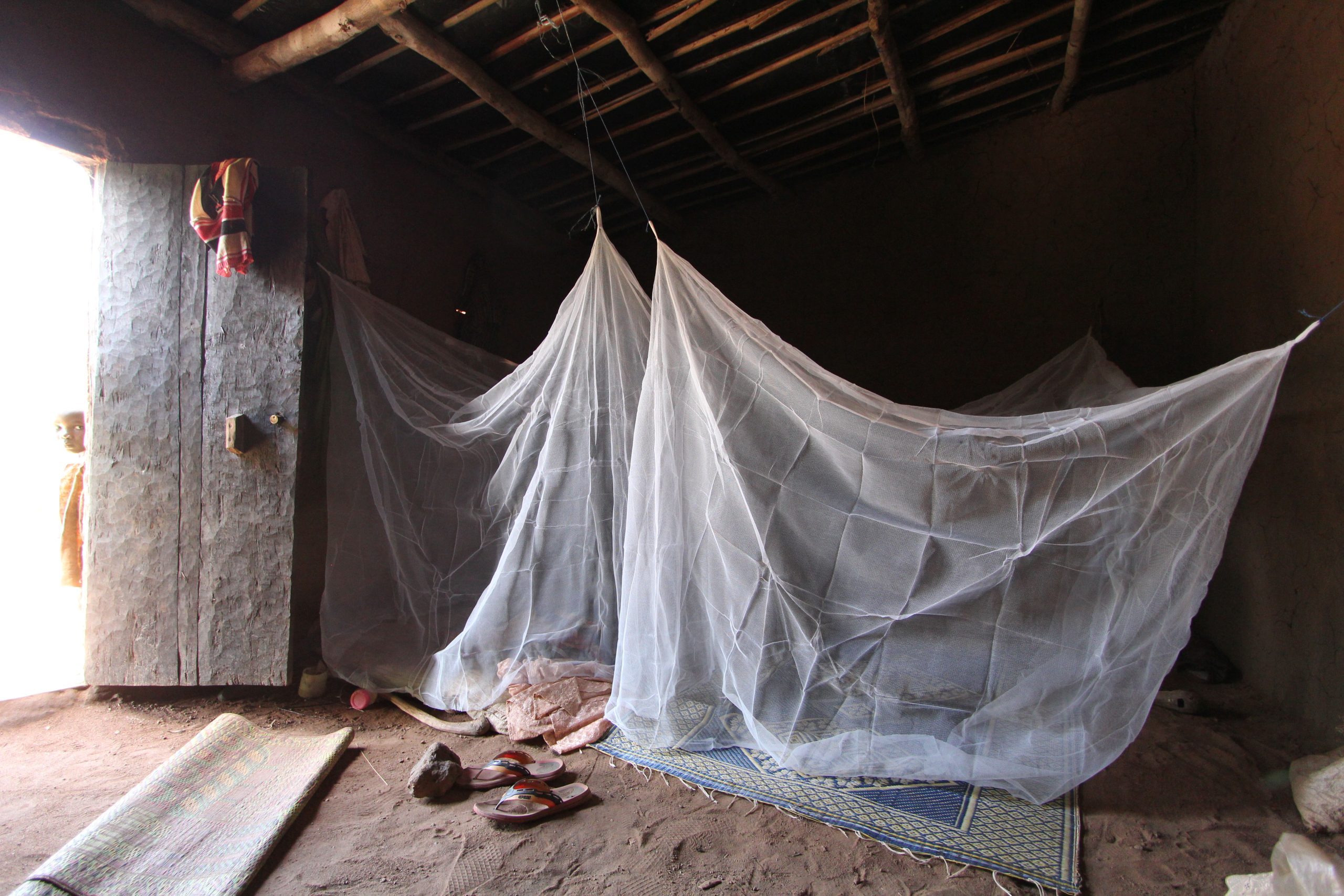Insecticide treated nets (ITNs)
ITNs are one of the most effective tools for malaria prevention, but increasing insecticide resistance threatens their impact.
ITNs are one of the most effective tools for malaria prevention, but increasing insecticide resistance threatens their impact.
IVCC works with industry partners to develop next-generation ITNs using novel and repurposed active ingredients to enhance efficacy and combat resistance.
Developing cost-effective solutions is key. Novel net designs, such those using insecticide combinations (dual active ingredient nets), weaving patterns that alternate insecticide-treated threads or partial treatment targeting high-contact areas like the net roof, offer promising ways to balance affordability with performance. Through innovation and collaboration, IVCC is helping ensure ITNs remain an accessible, life-saving tool.
IVCC has led the development of next-generation ITNs, bringing innovative dual-active ingredient nets to market to combat insecticide resistance.
IVCC has supported six ITN development projects, including the Interceptor® G2 , which is WHO-prequalified and in use. This net, along with the Royal Guard® (which was supported by IVCC in market entry) combine insecticides with different modes of action to overcome resistance. Ongoing collaborations with industry partners focus on new formulations, novel active ingredients, and innovative net designs to ensure more effective, scalable, and affordable malaria prevention tools.
Insecticide-treated nets (ITNs) provide both personal and community-wide protection against malaria by reducing mosquito populations. However, this relies on the effectiveness of the insecticide. Resistance to pyrethroids (the primary insecticide used in ITNs) is rising across Africa, weakening their impact. To address this, new ITNs combine multiple active ingredients with different modes of action, helping to overcome resistance and sustain malaria control efforts.

Insecticide resistance management
To move beyond pyrethroid-only nets, IVCC collaborates with industry to develop novel insecticide and identify chemistries that can be repurposed for use in public health. These include:
- Pyrethroid + repurposed chemistry (e.g. Interceptor® G2, Royal Guard®)
- Pyrethroid + Novel Active ingredients
- Novel active ingredient + repurposed chemistry
Balancing cost and efficacy
Developing highly effective, non-pyrethroid ITNs is a priority, but production costs remain a challenge. To improve accessibility, we explore cost-effective design innovations with manufacturers, such as:
- Selective weaving patterns, applying insecticide to alternating threads.
- Partial net treatment, focusing insecticides on high-contact areas like the net roof, where >85% of mosquito activity occurs.
Our market assessments on price, volume, and segmentation help guide industry and procurement strategies, ensuring sustainable, long-term impact of new innovations.

